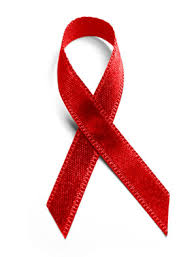We all know that Big Tobacco companies are big spenders.
Wednesday, April 18, 2012
Big Tobacco CEOs and their Big Payday
Posted by
Anonymous
at
2:31 PM
0
comments
![]()
Labels: BigTobacco, cancer prevention, CDC, cessation, Smoking and Health, Surgeon General's Report, tobacco
Wednesday, March 21, 2012
Kicking Butts and Helping Kids Stay Tobacco-Free
Happy Kick Butts Day!
- The younger a person is when they start using tobacco, the more likely that person will be addicted.
- Nearly 90% of smokers start before age 18 and 99% start before age 26.
- We have a staggering replacement rate – every person who dies from smoking-related causes is replaced by two new, young smokers.
Posted by
Anonymous
at
12:46 PM
0
comments
![]()
Labels: BigTobacco, CDC, FACT, kick butts day, media, Surgeon General's Report, Tips from a Former Smoker, youth sales
Friday, March 2, 2012
Graphic Cigarette Warning Labels and Big Tobacco's Stall Tactics
Earlier this week, a federal judge ruled the FDA’s new graphic warning labels on cigarette packages violate Big Tobacco’s freedom of speech.
Posted by
Anonymous
at
3:22 PM
0
comments
![]()
Labels: BigTobacco, FDA, smoking, tobacco
Thursday, August 18, 2011
Appeals Court Upholds Award For Punitive Damages against Philip Morris
"The court described Philip Morris' extensive efforts from the 1950s onward to deny the dangers of smoking to its customers and the government - contradicting the company's own research - and to make cigarettes more addictive and advertise them aggressively to youths as well as adults.
"The damage award is justified by 'the extreme reprehensibility of Philip Morris' misconduct, including the vast scale and profitability of its course of misconduct,' Justice H. Walter Croskey said in the majority opinion."
To read the full article, click here.
Posted by
Emily
at
2:25 PM
0
comments
![]()
Labels: BigTobacco, legal
Monday, May 31, 2010
WHO: World no tobacco day focuses on women
The tobacco industry capitalizes of women's sense of independence and financial vitality. Especially in nations where the new sense of independence has been found, the tobacco industry is trying to tie that freedom to smoking and tobacco use.
The hope for World No Tobacco Day is to also encourage the passed of the Framework Convention of Tobacco Control (FCTC). This document FCTC is the first WHO treaty of its kind. It was negotiated to prevent and control tobacco use all across the globe. The US has failed to act on this treaty.
Here is what we can do in Wisconsin to protect women and girls from the dangerous marketing of tobacco:
Call on our policy-makers!
- Implement a comprehensive ban on all forms of tobacco advertising, promotion and sponsorship, as called for in the WHO Framework Convention on Tobacco Control.
- Implement a comprehensive ban on tobacco smoke in all public places and workplaces, likewise called for in the WHO Framework Convention.
- Heed the call in the preamble of the WHO Framework Convention for "gender-specific tobacco control strategies" and the "full participation of women at all levels of [tobacco control] policy-making and implementation [of tobacco control measures]".
- Request assistance from WHO to implement the demand-reduction provisions of the WHO Framework Convention through the MPOWER package of tobacco control measures.
- Ensure that government agencies and other stakeholders work together to take into account the different needs of men and women.
- Ensure that tobacco control strategies take into account the special problems of women who chew tobacco.
Posted by
Erich
at
9:29 AM
0
comments
![]()
Labels: BigTobacco, WHO
Tuesday, May 11, 2010
New Study: Big Alcohol's influence in WI
The Wisconsin Democracy Campaign released a new study this week which examined the amount of money that legislators and partisan campaign committees received from Big Alcohol this past legislative session. The report concluded that the alcohol industry constitutes the third largest "special interest" in Wisconsin politics.
 Why you might ask is an organization like SmokeFree Wisconsin concerned about the money from Big Alcohol?
Why you might ask is an organization like SmokeFree Wisconsin concerned about the money from Big Alcohol?Glad you asked! There are a few important reasons why Big Alcohol's financial and political influence of legislators directly effects the work that we do here at SFW.
Taverns along with manufacturers, distributors, and retailers all contributed significant dollars to the total spending by the alcohol industry ($409,000 in 2008/09 alone).Taverns are an important group of financial contributers to legislators because of the consideration of a statewide smoke-free workplaces law, tougher drunk driving penalties, and the beer tax-- all considered this past legislative session.
 The largest individual recipients of Big Alcohol's money were all legislators who voted against common sense protections from secondhand smoke. Representative Davis (received $13,000), Senator Vinehout ($5,629), Senator Fitzgerald ($4,950), and Representative Fitzgerald ($3,700) all voted NO to protecting workers from secondhand smoke in Wisconsin Taverns. Is it possible that this kind of money doesn't buy influence?
The largest individual recipients of Big Alcohol's money were all legislators who voted against common sense protections from secondhand smoke. Representative Davis (received $13,000), Senator Vinehout ($5,629), Senator Fitzgerald ($4,950), and Representative Fitzgerald ($3,700) all voted NO to protecting workers from secondhand smoke in Wisconsin Taverns. Is it possible that this kind of money doesn't buy influence?To read the full release on this recent study visit: http://www.wisdc.org/pr051010.php
Posted by
Erich
at
9:28 AM
0
comments
![]()
Labels: Big Alcohol, BigTobacco, smoke-free
Friday, May 7, 2010
Looking at Tobacco Through a Microscope: FDA Tobacco Products Scientific Advisory Committee

The Family Smoking Prevention and Tobacco Control Act or FDA regulation of tobacco (or authority over tobacco) requires that a scientific advisory committee is set-up to investigate a number of issues related to tobacco. The Scientific Advisory Committee is perhaps one of the more controversial elements of the FDA regulations, both from public health, but also from Big Tobacco. This committee is charged with investigating the following areas:
- The impact of the use of menthol in cigarettes on the public health, including such use among children, African Americans, Latinos, and other racial and ethnic minorities
- The nature and impact of the use of dissolvable tobacco products on the public health, including such use on children
- The effects of the alteration of nicotine yields from tobacco products and whether there is a threshold level below which nicotine yields do not produce dependence on the tobacco product involved
- Any application submitted by a manufacturer for a modified risk tobacco product
Just last week the FDA denied a request from Phillip Morris (Altria, Inc.) to remove certain panelists due to financial conflicts and "irreconcilable biases." Admittedly Big Tobacco requesting the removal of certain "biased" scientists is ironic given there will also be three tobacco industry representatives. Are industry representatives not biased?
At any rate, Altria was concerned about the appointment of Neal Benowitz, Gregory Connolly, Jack Henningfield and Jonathan Samet. Some concerns raised were related to panelists being paid for expert witness testimony in tobacco related litigation, or potential ties to pharmaceutical companies.
While tobacco industry representatives will be non-voting, according the the FDA's own FAQ about this advisory committee, it is common to have industry representatives present on these types of committees.
To learn more about the group of scientists brought together by the FDA to explore the issues outlined above click here.
To learn more about the committee and its roles click here.
Posted by
Erich
at
9:07 AM
0
comments
![]()
Labels: BigTobacco, FDA
Wednesday, May 5, 2010
Spotlight: FDA Provisions effective in June
As part of the compromise brokered between health advocates and Big Tobacco, certain elements of the FDA Regulation of Tobacco had phase in periods. Starting June 22 this year a number of different regulations will go into effect.
- Larger, stronger warnings on smokeless tobacco product packaging and advertisements.
- The removal of vending machines in facilities where youth under 18 are present. Vending machines would still be allowable in businesses which cater to adults only.
- Product branded t-shirts, hats, and other swag are prohibited from being sold along with a tobacco product- say good bye to packs of Marlboro with a free T-shirt!
- Cigarettes may not be sold in packages fewer than 20. (Smaller packages are rare, now they will be completely eliminated.)
- All advertising for both cigarettes and smokeless products must be in plain black text on a white background. Magazine ads must be placed in publications with fewer than 2 million youth readers.
- Commercials for tobacco will change too- they can only be spoken words no music or jingles. Adult only facilities may allow audio ads with jingles or the like.
- No billboards or other outdoor advertisements are permitted within 1000 feet of schools, parks or playgrounds.
- Sponsoring cultural and athletic events is a thing of the past as well. No smokeless at the rodeo and no Phillip Morris at the baseball game.
- No free samples of tobacco, except smokeless in adult-only venues which meet certain restrictions.
Posted by
Erich
at
9:57 AM
0
comments
![]()
Labels: BigTobacco, FDA
Tuesday, April 20, 2010
The paradox between tobacco and cannabis regulation
Earlier this week CNBC posted an article (part of a special report on "Marijuana & Money") debating the business models of Big Tobacco and Big Pharma when it comes to the marketing and sale of legal cannabis. This article points to the larger debate about the legality and medical uses of cannabis. Here in Wisconsin a so-called "medical marijuana" bill was offered up but did not pass either house of the legislature.


Posted by
Erich
at
4:20 PM
0
comments
![]()
Labels: BigTobacco, cannabis
Tuesday, April 6, 2010
Tuesday, March 16, 2010
Big Tobacco: How Do You Sleep at Night?
While the ads described the product as light and luscious the results of the advertising were anything but that. The question must be asked, how can you sleep at night when most regular smokers started before age 18, when ad campaigns like Camel No. 9 show strong brand preferences among young girls, and when these ads directly contributed to the initiation of smoking of an audience which is supposed to be protected by the Master Settlement Agreement?The study enrolled more than one thousand 10-13 year olds in 2003 and followed them 5 times through 2008, asking participants to report a brand of “favorite” cigarettes. Specifically, teens who reported having a favorite cigarette ad at baseline were 50 percent more likely to have smoked by the fifth interview. The proportion of boys who reported having a favorite ad remained stable across all five surveys; however, it was found that after the launch of Camel No. 9, the percentage of teen girls who reported having a favorite cigarette ad increased by 10 percentage points, with Camel accounting for nearly all of this increase. (emphasis added.)
How many Wisconsin girls were lured by these ads? How many girls started smoking so that they too might be fashionable, grown-up, and luscious? How do you sleep at night Big Tobacco?
Posted by
Erich
at
9:00 AM
0
comments
![]()
Labels: BigTobacco, new study
Friday, February 19, 2010
Marlboro taking Snus Nationwide
As we have discussed extensively on the blog here- new and emerging products are rapidly coming onto the market, both in test cities and nationwide. Good old Altria, owners of Phillip Morris (PMI) and makers of Marlboro brand (the cigarette of choice for more smokers than any other brand) are at it again. "Seeking future growth," Big Tobacco claims is the reason that Marlboro Snus is going nationwide. By the end of March every convenient store and gas station will be stocked full of these lethal products.
At any rate, PMI proves once again we must remain vigilant in fighting Big Tobacco. We must also watch out for Big Tobacco's dirty tricks. Many states base the tax on Snus on weight like moist snuff, aka weight-based tax. We in Wisconsin saw the trend for lighter products and have switched to a percentage of price model of taxation on other tobacco products. This ensures that products on taxed more similarly to cigarettes and less like the virtually weightless system Big Tobacco prefers.
Posted by
Erich
at
9:00 AM
0
comments
![]()
Labels: BigTobacco, spit
Monday, January 11, 2010
Court Ruling
A while back we posted about a pending lawsuit that deals with FDA regulatory provisions eliminating the use of light or mild on cigarette packaging (See post on light and mild). Last week a U.S. Judge struck down portions of the new FDA law which restricts tobacco product advertising. However many of the provisions of the FDA law have stood up in the court challenge by Big Tobacco. The ruling states that FDA can't block tobacco companies from using colors and graphics- they also can't say their product is safer because it has been regulated by the FDA.
The important provisions that still stand are: the requirement to use large graphic health warnings on tobacco products, the elimination sponsorships of athletic, social and cultural events using brand names, and the elimination of using branding and logos on merchandise.
All sides, Big Tobacco, Advertising Folks, and Public Health all call this a victory.
Read the full article about the ruling.
Read the full ruling.
Campaign for Tobacco-Free Kids release
Posted by
Erich
at
2:48 PM
0
comments
![]()
Labels: BigTobacco, FDA
Tuesday, November 24, 2009
Big Tobacco Circumventing New Federal Tobacco Tax Laws

Posted by
Erich
at
9:30 AM
0
comments
![]()
Labels: BigTobacco
Wednesday, November 18, 2009
Big Tobacco Getting Bigger Reynolds in talks to buy Sweden's Niconovum
Annouced on November 8th, 2009, Tobacco Giant R.J. Reynolds in talks to buy Sweden's Niconovum. That's right R.J. Reynolds is trying to buy the Swedish-maker of a product that helps stop people who smoke. Niconovum's own website says their mission is to develop leading nicotine replacement therapies (NRT). They were formed in 2000 by experts in tobacco control and health. Currently they market a spray, gum, and pouch.
Posted by
Erich
at
9:35 AM
1 comments
![]()
Labels: BigTobacco, harm reduction
Tuesday, November 17, 2009
New Study: Smoker sensitivity to retail tobacco displays and quitting.
Posted by
Erich
at
8:53 AM
0
comments
![]()
Labels: BigTobacco, display ban
Monday, November 16, 2009
Federal Judge Rejects Tobacco Companies’ Effort to Block Key Provisions of New Tobacco Regulation Law
Judge McKinley forcefully backed the government’s interest in protecting consumers from misleading claims about tobacco products with supposedly reduced health risks. The judge agreed with the key argument that “given the significant health risks associated with the use of tobacco products and the history of marketing ‘low tar’ and ‘light’ cigarettes,” the government “has a substantial interest in protecting consumers from misleading tobacco industry claims about allegedly reduced risk tobacco products.”
Campaign for Tobacco-Free Kids, American Cancer Society, American Heart Association, American Lung Association among others released the following statement about this land mark decision.
We applaud the federal court’s decision to quickly and decisively reject the latest attempt by Big Tobacco to frustrate the intent of the new FDA law and allow the agency to get on with its role in putting an end to deceptive and dangerous tobacco marketing.
Posted by
Erich
at
8:20 AM
0
comments
![]()
Labels: BigTobacco, FDA
Thursday, November 12, 2009
PA: Lobbyists trying to buy their way out of increased tobacco taxes.
While most states have some transparency laws which allow citizens access to campaign finance information, Wisconsin is far from perfect in terms of providing completely open and detailed receipts from lobbyists. Big Tobacco often uses front groups to lobby on their behalf further making it difficult to track the money that comes from Big Tobacco to individual legislators.
However much can be learned from investigating where legislators get their money. To look up your Wisconsin Legislator click here to examine the campaign finance information.
Posted by
Erich
at
9:30 PM
0
comments
![]()
Labels: BigTobacco
Tuesday, November 3, 2009
Big Tobacco whines to President Obama about Canada
Its hard to be sympathetic to Big Tobacco, but that is exactly what they want- sympathy. Specifically, they want President Obama to challenge the Canadian ban on candy flavored cigarettes and small cigars. The argument is that Canada's ban on candy flavored tobacco violates WTO (World Trade Organization) obligations. What Big Tobacco fails to mention is that their interference in this matter violates the Framework Convention on Tobacco Control (FCTC). While the US is not signed on, as of yet, Canada is. The FCTC states that the tobacco industry must not interfere with the setting of health policy. Attempting to frame this as a trade issue misses the point entirely. Canada set forth this policy as part of their health agenda and while the ban restricts imports, the overall goal is to improve the health of the citizens of Canada.
They are trying to capitalize on a down economy and say that they provide jobs for growers of tobacco in the US. They have gone so far as to enlist a senator from a tobacco state to block the nomination of the deputy US Trade Representative.
This issue raises some important questions:
- While there might be jobs in growing tobacco, are these jobs that contribute to the health and well-being of the population?
- Would farmers in tobacco states be best served by growing vegetables for the communities, instead of tobacco?
Posted by
Erich
at
9:23 AM
0
comments
![]()
Labels: BigTobacco
Friday, October 30, 2009
L. A. smoke-free outdoor dining
Per the usual in debates about smoke-free workplaces, a Big Tobacco sponsored organization is fighting the regulations. The policy could go to the full city council as early as next month.
Unfortunately for Wisconsin, we are not allowed to take action on the local level to make our outdoor dining areas smoke-free. Big Tobacco used a front group to ensure that patrons and workers will not have the right to be protected from secondhand smoke. Hopefully in the future, the restrictions at the state-level can be repealed and local city councils, village boards, and county supervisors will take up the issue of smoke-free outdoor dining.
Posted by
Erich
at
9:29 AM
1 comments
![]()
Labels: BigTobacco, smoke-free



















